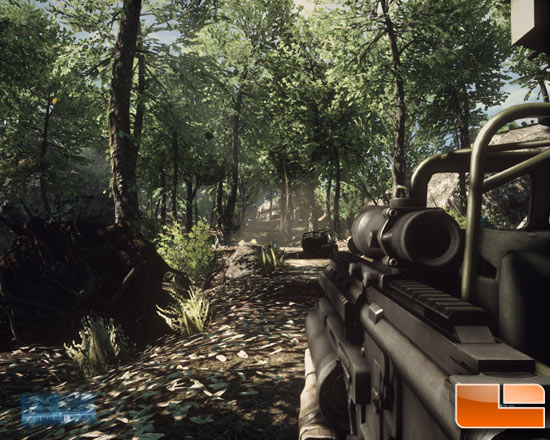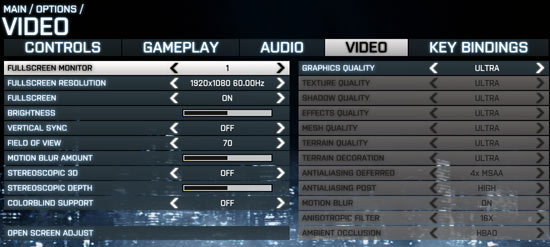NVIDIA GeForce GTX 690 4GB Video Card Review
Battlefield 3

Battlefield 3 (BF3) is a first-person shooter video game developed by EA Digital Illusions CE and published by Electronic Arts. The game was released in North America on October 25, 2011 and in Europe on October 28, 2011. It does not support versions of Windows prior to Windows Vista as the game only supports DirectX 10 and 11.
It is a direct sequel to 2005’s Battlefield 2, and the eleventh installment in the Battlefield franchise. The game sold 5 million copies in its first week of release and the PC download is exclusive to EA’s Origin platform, through which PC users also authenticate when connecting to the game.

Battlefield 3 debuts the new Frostbite 2 engine. This updated Frostbite engine can realistically portray the destruction of buildings and scenery to a greater extent than previous versions. Unlike previous iterations, the new version can also support dense urban areas. Battlefield 3 uses a new type of character animation technology called ANT. ANT technology is used in EA Sports games, such as FIFA, but for Battlefield 3 is adapted to create a more realistic soldier, with the ability to transition into cover and turn the head before the body.
This game looks great and we tested with the highest settings possible. This means we used ‘ultra’ settings and really punished the cards being tested. We ran FRAPS for two minutes on the single player map called ‘Rock and a Hard Place’ for benchmarking.

Benchmark Results: In Battlefield 3 the NVIDIA GeForce GTX 690 came up a little short of the performance of a pair of NVIDIA GeForce GTX 680’s in SLI. This is simply due to the fact that the base core clocks on the GTX 690 are 91MHz lower than those of the GeForce GTX 680, the boost clocks are closer together and separated by only 39MHz. The differences between these two setups isn’t mind blowing, but worth enough to consider. At a resolution of 1920×1080 the GTX 690 averaged 133.7 frames per second while the GTX 680’s in SLI averaged 137.9 frames per second. Increasing the resolution to 2560×1600 the GTX 690 averaged 85.1 frames per second while in SLI the GTX 680’s averaged 88.4 frames per second. At these two resolutions there is only 3%-4% difference.

Comments are closed.